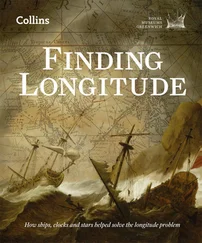The initial idea to popularize my more academic The Bubble and Beyond came from my agent Mel Flashman, who arranged for its German publication. This book includes apolitical commentary on the U.S., Irish, Latvian and Greek economies, much of which I originally published in Counterpunch, so it is appropriate that Jeffrey St. Clair is publishing this as a Counterpunch e-book. He has made many helpful editorial suggestions that I have followed.
Constructive ideas for how to structure the book came from Dave Kelley and Susan Charette, who reviewed early drafts and helped me focus its logic. Lynn Yost and CorneliaWunsch have handled the typesetting and publication with great patience.
I have published parts of some chapters in this book on the website Naked Capitalism , maintained by Yves Smith and Lambert Strether to cover global finance, and on CounterPunch . A good number of articles cited also have come from these two sites.
Jeffrey Sommers and Igor Pimenov provided much of the information on Latvia, and Jorge Vilches filled me in on Argentina. Fruitful ongoing discussion has come from David Graeber, Steve Keen, Michael Perelman, Bertell Ollman and Randy Wray.
My wife, Grace Hudson, provided a loving and supportive environment without which I would not have been able to write this book. Its dedication therefore belongs to her.
I did not set out to be an economist. In college at the University of Chicago I never took a course in economics or went anywhere near its business school. My interest lay in music and the history of culture. When I left for New York City in 1961, it was to work in publishing along these lines. I had worked served as an assistant to Jerry Kaplan at the Free Press in Chicago, and thought of setting out on my own when the Hungarian literary critic George Lukacs assigned me the English-language rights to his writings. Then, in 1962 when Leon Trotsky’s widow, Natalia Sedova died, Max Shachtman, executor of her estate, assigned me the rights to Trotsky’s writings and archive. But I was unable to interest any house in backing their publication. My future turned out not to lie in publishing other peoples’ work.
My life already had changed abruptly in a single evening. My best friend from Chicago had urged that I look up Terence McCarthy, the father of one of his schoolmates. Terence was a former economist for General Electric and also the author of the “Forgash Plan.” Named for Florida Senator Morris Forgash, it proposed a World Bank for Economic Acceleration with an alternative policy to the existing World Bank — lending in domestic currency for land reform and greater self-sufficiency in food instead of plantation export crops.
My first evening’s visit with him transfixed me with two ideas that have become my life’s work. First was his almost poetic description of the flow of funds through the economic system. He explained why most financial crises historically occurred in the autumn when the crops were moved. Shifts in the Midwestern water level or climatic disruptions in other countries caused periodic droughts, which led to crop failures and drains on the banking system, forcing banks to call in their loans. Finance, natural resources and industry were parts of an interconnected system much like astronomy — and to me, an aesthetic thing of beauty. But unlike astronomical cycles, the mathematics of compound interest leads economies inevitably into a debt crash, because the financial system expands faster than the underlying economy, overburdening it with debt so that crises grow increasingly severe. Economies are torn apart by breaks in the chain of payments.
That very evening I decided to become an economist. Soon I enrolled in graduate study and sought work on Wall Street, which was the only practical way in practice to see how economies really functioned. For the next twenty years, Terence and I spoke about an hour a day on current economic events. He had translated A History of Economic Doctrines: From the Physiocrats to Adam Smith , the first English-language version of Marx’s Theories of Surplus Value — which itself was the first real history of economic thought. For starters, he told me to read all the books in its bibliography — the Physiocrats, John Locke, Adam Smith, David Ricardo, Thomas Malthus, John Stuart Mill and so forth.
The topics that most interested me — and the focus of this book — were not taught at New York University where I took my graduate economics degrees. In fact, they are not taught in any university departments: the dynamics of debt, and how the pattern of bank lending inflates land prices, or national income accounting and the rising share absorbed by rent extraction in the Finance, Insurance and Real Estate (FIRE) sector. There was only one way to learn how to analyze these topics: to work for banks. Back in the 1960s there was barely a hint that these trends would become a great financial bubble. But the dynamics were there, and I was fortunate enough to be hired to chart them.
My first job was as mundane as could be imagined: an economist for the Savings Banks Trust Company. No longer existing, it had been created by New York’s then-127 savings banks (now also extinct, having been grabbed, privatized and emptied out by commercial bankers). I was hired to write up how savings accrued interest and were recycled into new mortgage loans. My graphs of this savings upsweep looked like Hokusai’s “Wave,” but with a pulse spiking like a cardiogram every three months on the day quarterly dividends were credited.
The rise in savings was lent to homebuyers, helping fuel the post-World War II price rise for housing. This was viewed as a seemingly endless engine of prosperity endowing a middle class with rising net worth. The more banks lend, the higher prices rise for the real estate being bought on credit. And the more prices rise, the more banks are willing to lend — as long as more people keep joining what looks like a perpetual motion wealth-creating machine.
The process works only as long as incomes are rising. Few people notice that most of their rising income is being paid for housing. They feel that they are saving — and getting richer by paying for an investment that will grow. At least, that is what worked for sixty years after World War II ended in 1945.
But bubbles always burst, because they are financed with debt, which expands like a chain letter for the economy as a whole. Mortgage debt service absorbs more and more of the rental value of real estate, and of homeowners’ income as new buyers take on more debt to buy homes that are rising in price.
Tracking the upsweep of savings and the debt-financed rise in housing prices turned out to be the best way to understand how most “paper wealth” has been created (or at least inflated) over the past century. Yet despite the fact that the economy’s largest asset is real estate — and is both the main asset and largest debt for most families — the analysis of land rent and property valuation did not even appear in the courses that I was taught in the evenings working toward my economics PhD.
When I finished my studies in 1964, I joined Chase Manhattan’s economic research department as its balance-of-payments economist. It was proved another fortunate on-the-job training experience, because the only way to learn about the topic was to work for a bank or government statistical agency. My first task was to forecast the balance of payments of Argentina, Brazil and Chile. The starting point was their export earnings and other foreign exchange receipts, which served as were a measure of how much revenue might be paid as debt service on new borrowings from U.S. banks.
Just as mortgage lenders view rental income as a flow to be turned into payment of interest, international banks view the hard-currency earnings of foreign countries as potential revenue to be capitalized into loans and paid as interest. The implicit aim of bank marketing departments — and of creditors in general — is to attach the entire economic surplus for payment of debt service.
Читать дальше












